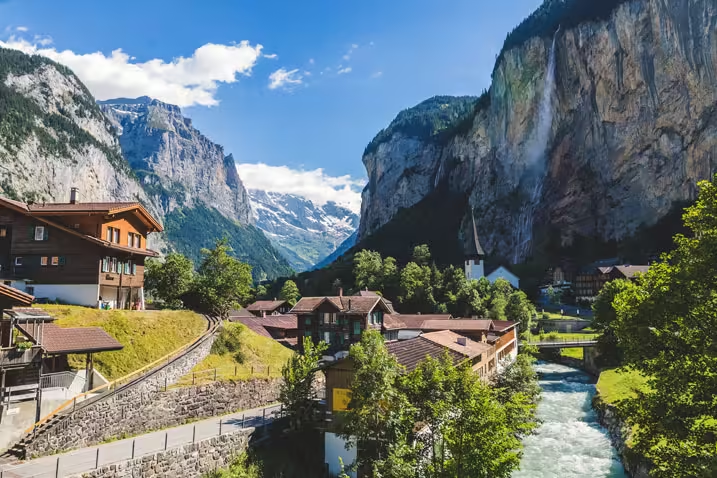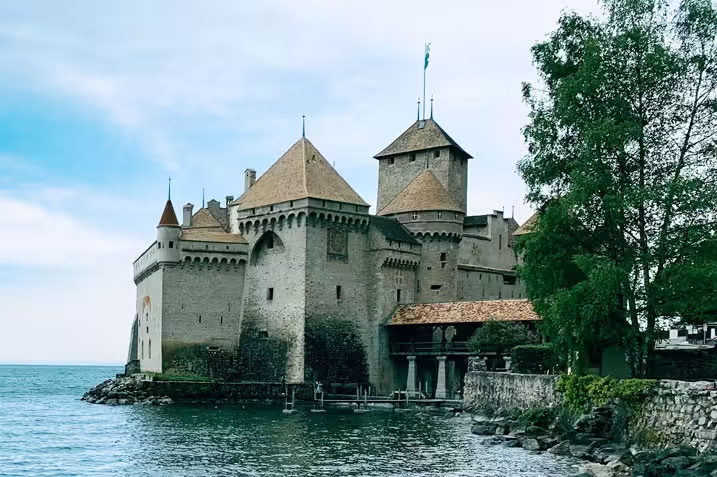Switzerland - iconic attractions

Why is Switzerland such an interesting place for tourists? Most of the travelers come to this country to visit ski and health resorts, which are famous for their excellent service and extensive infrastructure.
Well-appointed ski resorts in Switzerland attract with excellent trails, clean air and unforgettable landscapes. Resort activities are not limited to skiing. Here, tourists will find perfect conditions for mountaineering, rafting, winter fishing, cycling and just pleasant strolls.
Health resorts in Switzerland have become famous worldwide due to their thermal and mineral springs. They are famous for their modern equipment, a wide range of wellness and health procedures, as well as excellent service.
The magnificent Alps and pristine wilderness are the main factors of the Swiss tourism appeal. Despite the fact that Switzerland is a relatively small country (approximately 41 thousand square kilometers), its nature is surprisingly diverse.
The mountains make the local landscapes especially picturesque. 60% of the country’s territory is occupied by the Alps, with another 10% by the Jura mountain range located in the north-west of the country. Snow-capped mountain peaks, cozy valleys, picturesque villages, whitewater waterfalls, alpine meadows, beautiful rivers and lakes create magnificent and unforgettable landscapes.
Geneva, Zurich, Montreux, and Berne are the Swiss cities most popular among tourists. They offer their guests an amusing and eventful excursion program that introduces the country’s unique culture and traditions to travelers.
Natural attractions
The Pilatus
The Pilatus massif is located 10 kilometers from Lucerne town. This is one of the most picturesque places in Switzerland. A steep relief of the mountain resembles a dragon back.
The Tomlishorn peak is the highest point of the massif. It is 2,128.5 meters high. You can reach the top by train, cable-railway or on foot.
Any of these three options guaranty fantastic views. However, the latter way will require decent endurance and plenty of time. There is a cable park on the mountain, and in winter opens “Snow&Fun park”.
Lake Geneva
Lake Geneva is the second largest in Central Europe. It is situated on the territory of Switzerland and France. The overall lake area is 582.4 square kilometers, of which 348.4 belong to Switzerland. The water in the lake is very clean, but cool. Here, the air fresh and the landscapes are surprisingly magnificent.
Often, the waters of Lake Geneva stay perfectly calm and the water surface reflects waterside objects like a mirror. The most popular resorts of the country are located on the lake shores; they offer a whole variety of leisure options for travelers. For example, diving enthusiasts can admire shipwrecks and abundant underwater world. For about 100 years, sailing sport has been developing on the lake.
There are plenty of yacht clubs, with an international sailing regatta taking place here.
The Rhine Falls
In the northern part of Switzerland, next to Neuhausen am Rheinfall, there is the plain Rhine Falls. The waterfall is no more than 23 meters high, but it is the largest in Europe in terms of the volume of falling water.
The waterfall is especially impressive in summer, when the average water flow is 600 cubic meters per second. In winter, the water amount decreases and the volume of falling water drops to 250 cubic meters per second.
At night, the waterfall is beautifully illuminated and turns into an even more spectacular and mysterious sight. Close to the waterfall, there are two interesting castles – Woerth and Laufen.

The Swiss national park
The total area of this tourist attraction is 172.4 square kilometers. On its territory, economic activity is completely prohibited. More than two dozen walking routes have been developed the park, making it possible for you to explore the territory comfortably and to get acquainted with the most diverse alpine flora. The park fauna is represented by more than 60 species of mammals.
Verzasca River
The river is famous for its crystal-clear water and picturesque landscapes. An amazing fact is there are no living creatures and plants in the river at all. One of the river attractions is a double-arched Roman bridge. Also, it will be interested for travelers to visit a stone-built village Corippo and Lavatezzo town.
Lauterbrunnen Valley
Lauterbrunnen village is one of the most picturesque places in Switzerland. It is surrounded by steep cliffs and waterfalls, including 300-meter high Staubbach waterfall – one of the highest in Europe.
The valley’s unusual attraction is Trummelbach waterfall, locked inside the mountain.
Aletsch Glacier
This glacier was formed about 10 thousand years ago. Today it is one of the largest in the Alps. The glacier is located on the southern slope of the Bernese Alps.
It stretches for about 24 kilometers and amazes with bizarre and uncommon shapes. The global warming has affected this glacier too, reducing it by 113 meters.
Saint Beatus caves
Caves are located 6 km from Interlaken. They stretch underground for about a kilometer. In the cave labyrinths, tourists can see bizarre stalactites and stalagmites, underground waterfalls, and streams.
The legend has it that a dragon used to live in the cave, so the tourist boats for saling the underground lake are made in the shape of this fantastic character.

Architectural and historical attractions of Switzerland
Chillon castle
This most popular attraction is located on the Lake Geneva shore. Chillon Castle looks extremely representative. It is located on a low cliff, slightly rising above the water surface and being connected with the coast by a small bridge. The castle faces the road with its fortified side, with the living quarters on the opposite side.
The castle complex includes 25 constructions built in different epochs. Numerous castle owners took care of its condition and regularly reconstructed and strengthened the fortifications. The castle consists of many housekeeping facilities, rooms and four halls, with their windows overlooking the magnificent lake.
The atmosphere inside the castle is mysterious and otherworldly, unintentionally bring back memories of valiant knights and ghosts.
Lausanne Cathedral
This Gothic cathedral was built in the 13th century. Gargoyles decorate the cathedral facade. They serve as drains.
The magnificent portal of the cathedral is decorated with medieval statues and decorative elements.
There is a magnificent rosette window on the south wall. It dates back to the 13th century and shows medieval ideas about the world structure. There is a viewing point in one of the cathedral towers.

The Old City of Bern
The old city is the heart and soul of Bern. This historical part of the city keeps memories of the past epochs. It is here, on the narrow streets untouched by time that most of the Bern attractions are concentrated.
These include the city cathedral, the clock tower with the astronomical clock, the ancient stone bridge, the Church of Nydegg, and lots of interesting fountains.
Jet d’Eau fountain
When being built, the fountain was an additional element of a liquid-operated factory. It dumped the excess water accumulated in the hydraulic system to the lake. Citizens loved the fountain very much.
As time wore on, they moved it a few meters further and increased its power. Today, the fountain, located in the middle of the lake, is 140 meters high. At night, it is beautifully illuminated and looks an incredibly beautifully.
Kapelbrucke Bridge
Kapellbrucke Bridge is the oldest functioning wooden bridge in Europe. Back in the old days, it used to be a part of the town fortification system. Nowadays, a 200-meter covered bridge joins the old and the new parts of Lucerne city and enables the locals to reach the other side easily. At the same time, the bridge is a kind of an art gallery.
Under the roof ridge, there are 111 paintings demonstrating important moments of the city life. In 1993, most of the paintings were destroyed during a fire. It took about a year to restore the bridge construction and the paintings. In 1994, the bridge restored its functions.
The Rhaetian railway
This famous narrow-gauge railway network makes it possible to get to the hard-to-reach and remote Alpine areas. This unusually picturesque road passes spectacular bridges and viaducts, with their total number approaching two hundred. On their way, trains pass lots of sharp turns and 55 tunnels.
Passengers have an opportunity to enjoy the incredible scenery through panoramic windows. The Albula and Bern branches are the most demanded. The Albula line crosses a unique bridge, which is a 65 meter-high arched structure. The bridge is 136 meters long.


Contact our company representative
Elena Mislitchi
or write to the messenger:
